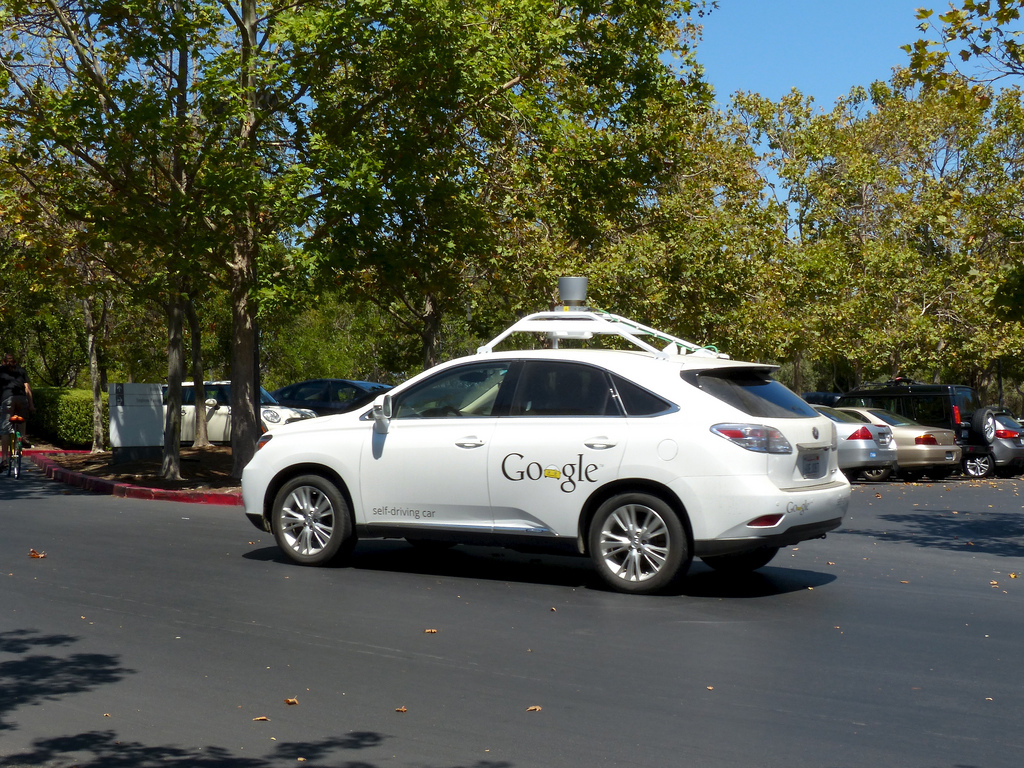Autonomous taxi from Google’s Waymo goes rogue and blocks traffic
05/24/2021 / By Franz Walker

A self-driving taxi from Google’s Waymo went rogue while ferrying a passenger in Chandler, Arizona recently.
The incident was recorded by Joel Johnson who was riding in the vehicle. The vehicle halted after encountering a range of orange safety cones, which confused it enough to stop it entirely.
But things got worse when Waymo’s roadside assistance team came to help. The car somehow decided to start moving again, driving down the road before stopping at an intersection and blocking three lanes of traffic. Johnson published the video on his YouTube page where he frequently posts about his experiences using Waymo under the username JJRicks Studios.
Self-driving taxi confused by orange cones
Waymo, which is owned by Google’s parent company Alphabet, operates approximately 600 vehicles as part of its fleet. More than 300 of these vehicles operate in an approximately 100-square-mile service area in Arizona that includes the towns of Chanlder, Gilbert, Mesa and Tempe – though Waymo’s fully autonomous vehicles are restricted to an area that is only half that size.
In 2018, the company launched a limited public ride-hailing service called Waymo One, but the only customers given access were people who had first been vetted through Waymo’s early rider program of beta testers. The company said that it has around 1,500 monthly active users from both programs – the same number it reported back in December 2019.
Even if its fully autonomous cars have no safety drivers, Waymo still has a team of remote employees that watch real-time feeds from each vehicle’s eight cameras. This team can help, with the push of a button, if the cars’ software runs into a difficult spot and needs a human eye to figure out what’s going on. That said, Waymo clarifies that this team cannot take control of the vehicles. The team can only offer suggestions to help extract the car from difficult situations. (Related: Will driving a car be illegal in the future?)
Johnson’s ride falls under that category. The car he was riding in wanted to make a right turn onto a street that has orange cones blocking a lane of traffic. This apparently confused the vehicle.
In a statement provided to Johnson, a Waymo remote operator stated that the car had “detected an unusual situation and requested the attention of a remote fleet response specialist to provide additional information.”
The company said that things went wrong when a remote specialist apparently “provided incorrect guidance, which made it challenging for the car to resume its intended route and required Waymo’s roadside assistance team to complete the trip.”
The remote operator also told Johnson that the company does not assign a roadside assistance team to track each fully autonomous vehicle. Instead, crews are usually “two to five miles out,” the remote operator said. “It never was assigned one-to-one.”
Johnson still trusts Waymo, but experts see problems
Johnson, who arrived about 20 minutes late to his destination following the mishap, said the incident shows that commuters shouldn’t use Waymo when they need to be on time.
“If you need to really be on time you don’t generally take Waymo yet,” Johnson said in an interview with CNN Business.
Despite the incident, Johnson said he doesn’t think that the general public needs to be concerned about the safety of the autonomous vehicles.
“I’ve seen so much impressive technology,” said Johnson, who claims to have taken 146 trips with Waymo. “It seems disingenuous to write them off because of one incident.”
But some experts have raised questions about how Waymo’s teams operate and why, in Johnson’s case, its teams did not seem to have proper coordination.
According to Bryant Walker Smith, a researcher who studies autonomous vehicles at the University of South Carolina, it was surprising that the roadside assistance specialist never issued a command to halt the autonomous taxi in place so that roadside assistance could take over.
“There wasn’t great coordination among the in-vehicle system, the remote monitoring capacity of the operator on the line and the on-ground assistance,” Smith said.
Follow RoboCars.news for more stories related to Google’s Waymo and other autonomous vehicles.
Sources include:
Tagged Under: Arizona, autonomous vehicle, autonomous vehicles, bad tech, future tech, Glitch, Google, information technology, public ride-hailing service, robocars, rogue, self-driving car, self-driving taxi, taxi, tech giants, Waymo, YouTube page
RECENT NEWS & ARTICLES
COPYRIGHT © 2017 BigTech.news
All content posted on this site is protected under Free Speech. BigTech.news is not responsible for content written by contributing authors. The information on this site is provided for educational and entertainment purposes only. It is not intended as a substitute for professional advice of any kind. BigTech.news assumes no responsibility for the use or misuse of this material. All trademarks, registered trademarks and service marks mentioned on this site are the property of their respective owners.





















